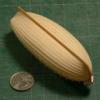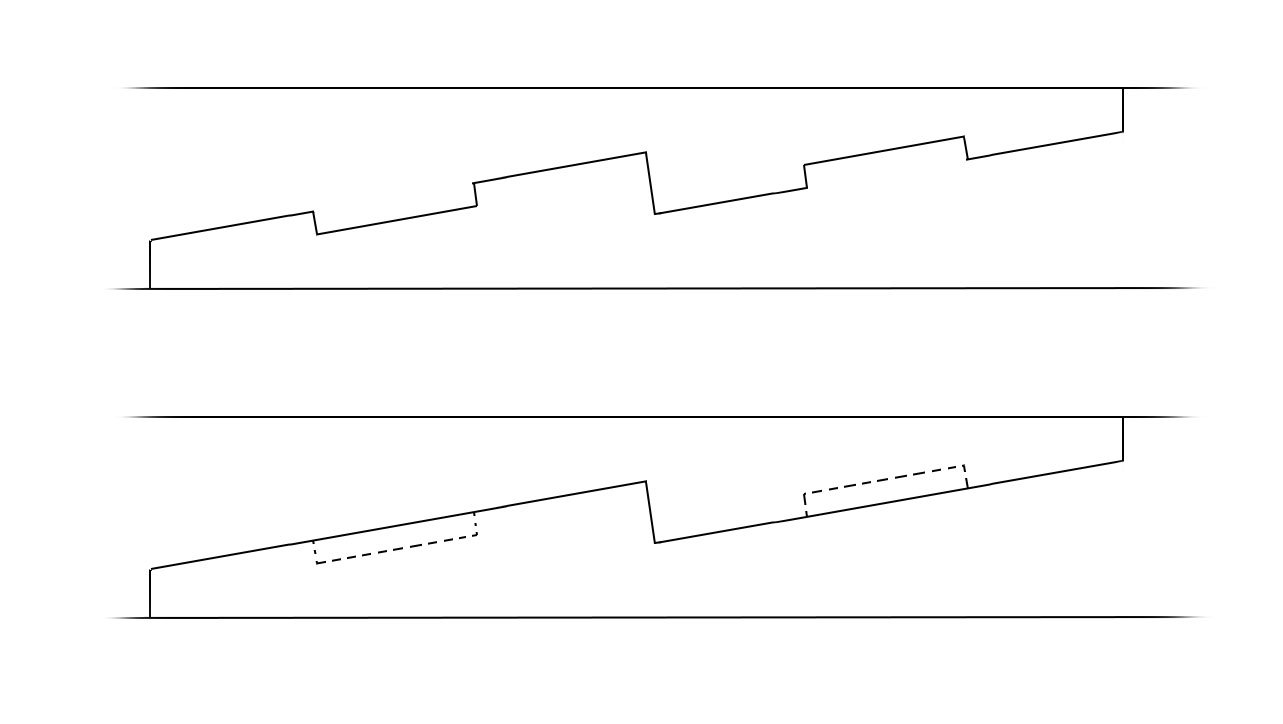-
Posts
13,276 -
Joined
-
Last visited
Content Type
Profiles
Forums
Gallery
Events
Everything posted by druxey
-

Converting a Backyard Shed into a Model Workshop
druxey replied to Hank's topic in Modeling tools and Workshop Equipment
That mezzanine or loft is what I call the oubliette: a place where you can forget the things that get stashed up there! -

Tabled Clamps
druxey replied to allanyed's topic in Building, Framing, Planking and plating a ships hull and deck
Tabling is where the mating surfaces of a joint have a long shallow tenon on one side and a corresponding mortise on the other piece. In a piece 4" thick I imagine the upper version would be meant. -

Chocks for futtocks
druxey replied to allanyed's topic in Building, Framing, Planking and plating a ships hull and deck
Interesting point, Allan. Those earlier illustrations do show pointy-end chocks (B), which I've always been suspicious of. They are inherently weak. However, perhaps the remains of an early wreck could confirm or refute this style of chock. -
There are others of us out there who know our way around graphic programs as well! My step-son used to refer to me as a 'pre-geezer'. I did say 'used to'....
- 2,696 replies
-
- heller
- soleil royal
-
(and 9 more)
Tagged with:
-
A hull only would still look nice, Greg!
- 3,618 replies
-
- young america
- clipper
-
(and 1 more)
Tagged with:
-

Shroud cleats and how to seize them?
druxey replied to captain_hook's topic in Masting, rigging and sails
Either two or three seizings are appropriate. -

Gun Spile
druxey replied to Mark Allen's topic in Discussion for a Ship's Deck Furniture, Guns, boats and other Fittings
That photo is of a land carriage and land piece of ordnance. The wheels have iron 'shoes' and the gun has elevation marks on the side of the base ring. -
Yes, I used the paint-and-wipe method with a slightly damp Q-tip.
- 2,696 replies
-
- heller
- soleil royal
-
(and 9 more)
Tagged with:
-

Proxxon Planer DH40 Issue
druxey replied to ChrisLBren's topic in Modeling tools and Workshop Equipment
Sounds like blade damage if these are longitudinal grooves or raised lines. -
I understand that verdigris develops in the presence of air. Underwater, however, there is less oxygen. Scouring, as well as possible electrolytic action, takes place leaving the copper relatively bright. Only the area of copper near and above water, exposed to air, will turn green. Comparing a dry-docked copper bottom with copper submerged in water is not a good analogy.
-
I've had success in the past by scoring clear acetate sheet and putting a little dark grey acrylic (not black!) into the scores.
- 2,696 replies
-
- heller
- soleil royal
-
(and 9 more)
Tagged with:
-
Gee, Eric, if you were in the neighbourhood you should have let me know and dropped by!
- 599 replies
-
- sidewheeler
- arabia
-
(and 4 more)
Tagged with:
-
Nice to see you back in (miniature) action, Rob!
- 1,208 replies
-
- great republic
- clipper
-
(and 1 more)
Tagged with:
-
Super work, as usual. Just ask my book-keeper, aka She Who Must Be Obeyed, whether we are a non-profit or not!
About us
Modelshipworld - Advancing Ship Modeling through Research
SSL Secured
Your security is important for us so this Website is SSL-Secured
NRG Mailing Address
Nautical Research Guild
237 South Lincoln Street
Westmont IL, 60559-1917
Model Ship World ® and the MSW logo are Registered Trademarks, and belong to the Nautical Research Guild (United States Patent and Trademark Office: No. 6,929,264 & No. 6,929,274, registered Dec. 20, 2022)
Helpful Links
About the NRG
If you enjoy building ship models that are historically accurate as well as beautiful, then The Nautical Research Guild (NRG) is just right for you.
The Guild is a non-profit educational organization whose mission is to “Advance Ship Modeling Through Research”. We provide support to our members in their efforts to raise the quality of their model ships.
The Nautical Research Guild has published our world-renowned quarterly magazine, The Nautical Research Journal, since 1955. The pages of the Journal are full of articles by accomplished ship modelers who show you how they create those exquisite details on their models, and by maritime historians who show you the correct details to build. The Journal is available in both print and digital editions. Go to the NRG web site (www.thenrg.org) to download a complimentary digital copy of the Journal. The NRG also publishes plan sets, books and compilations of back issues of the Journal and the former Ships in Scale and Model Ship Builder magazines.



